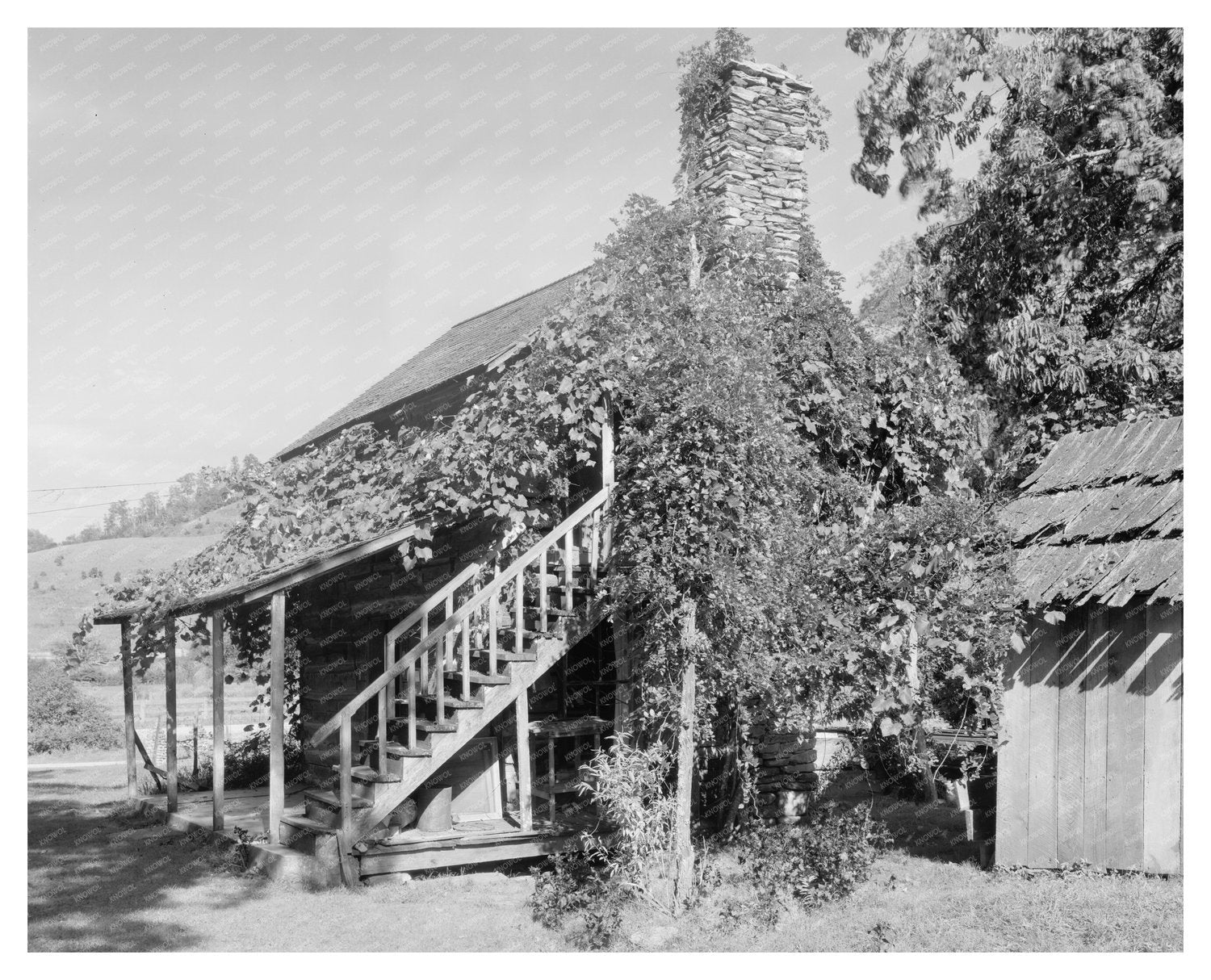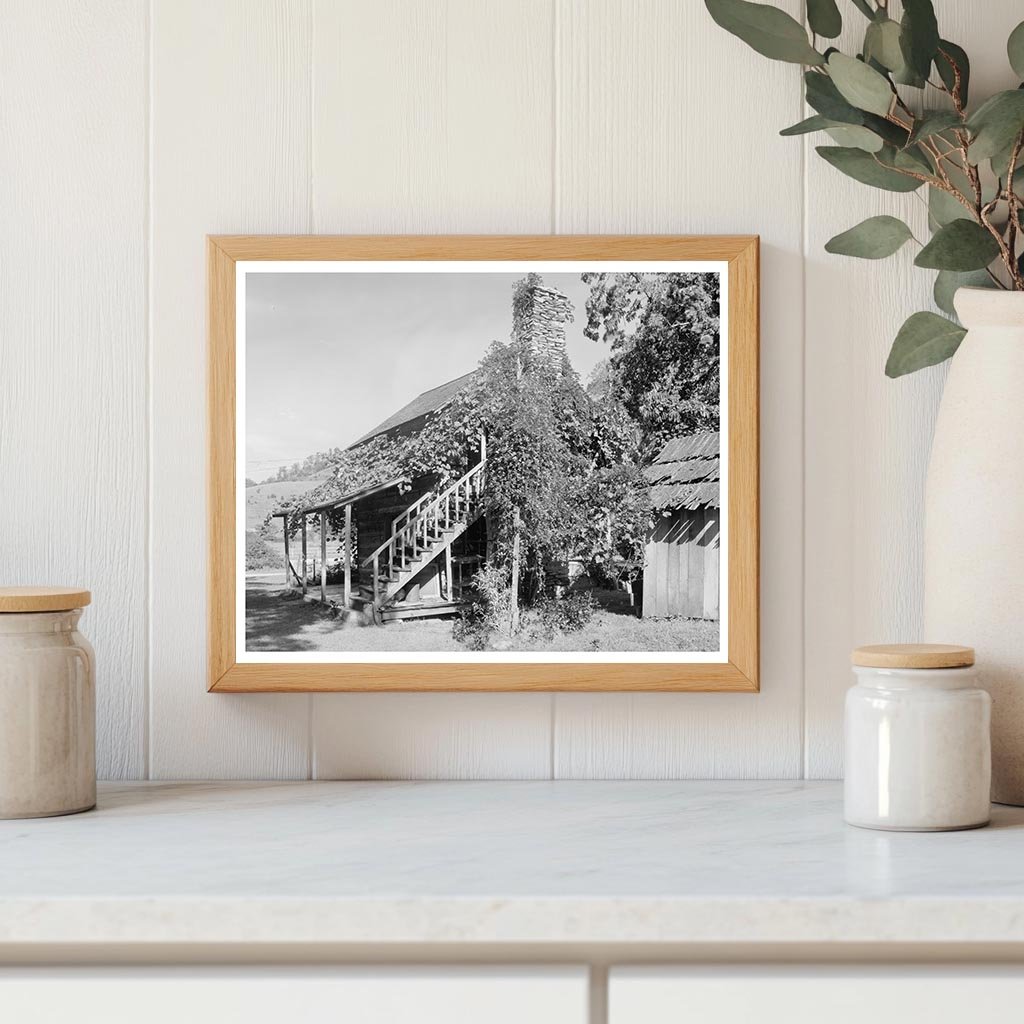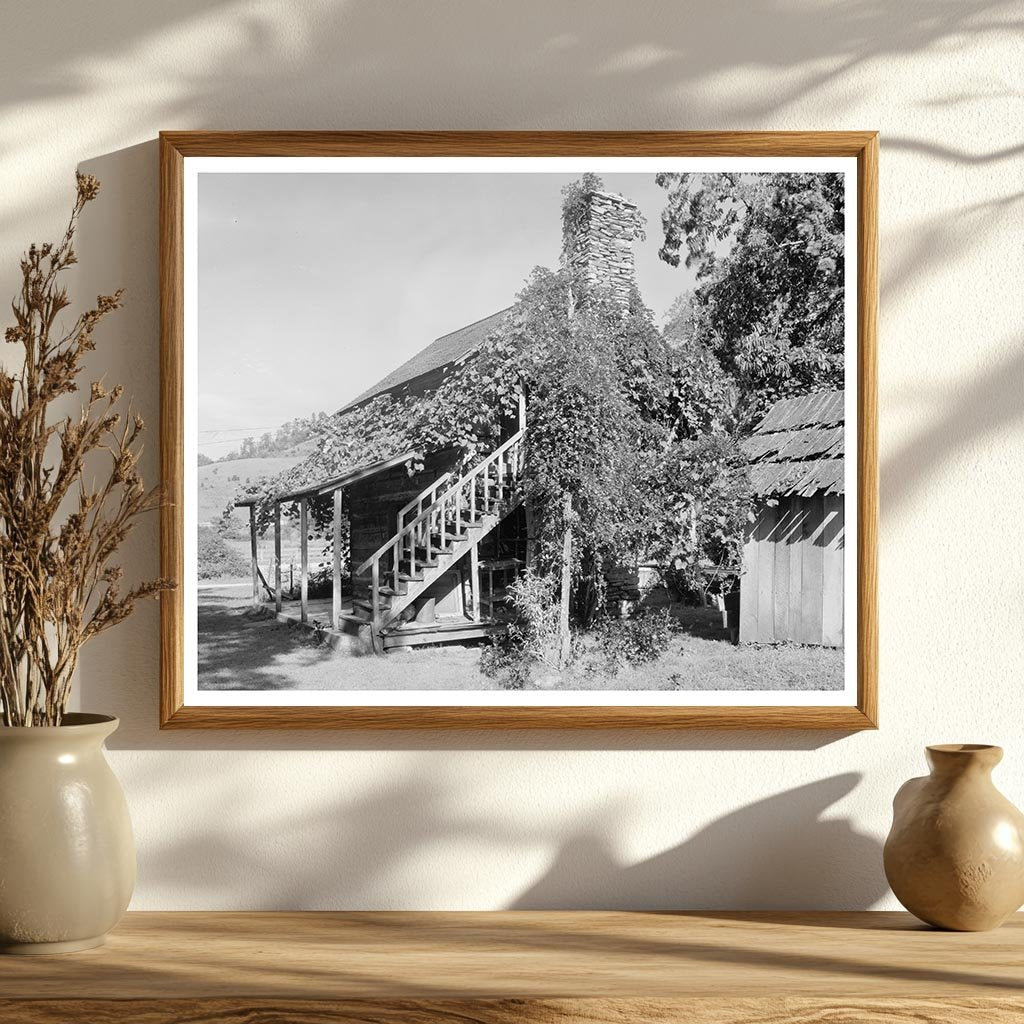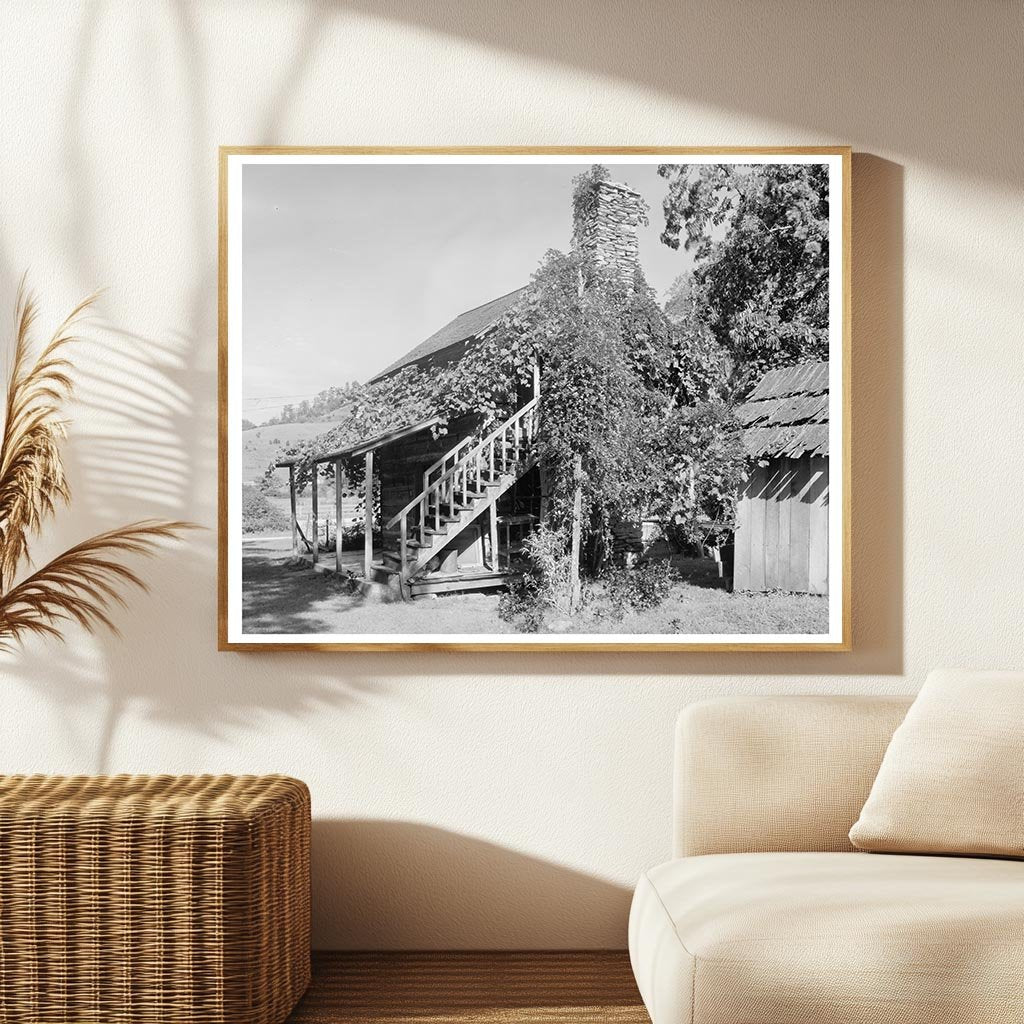



Historic 1812 Structure in Valle Crucis, NC
This vintage photograph captures a historic structure in Valle Crucis, Watauga County, North Carolina, dating back to 1812. The building played a significant role in the regions architectural history and is noted for producing carpets that were later used in the White House.
The image showcases key architectural features typical of the period, including prominent chimneys, intricate hand railings, and inviting porches that reflect the craftsmanship of early 19th-century builders. The surrounding vines add to the charm of this important landmark, emphasizing the harmony between the structure and its natural environment.
Documented as part of the Carnegie Survey of the Architecture of the South, this photograph is a valuable historical record. The survey aimed to catalog significant architectural sites in the southern United States, ensuring their preservation for future generations. This particular image serves as a reminder of North Carolinas rich cultural heritage and architectural legacy.

Historic 1812 Structure in Valle Crucis, NC
